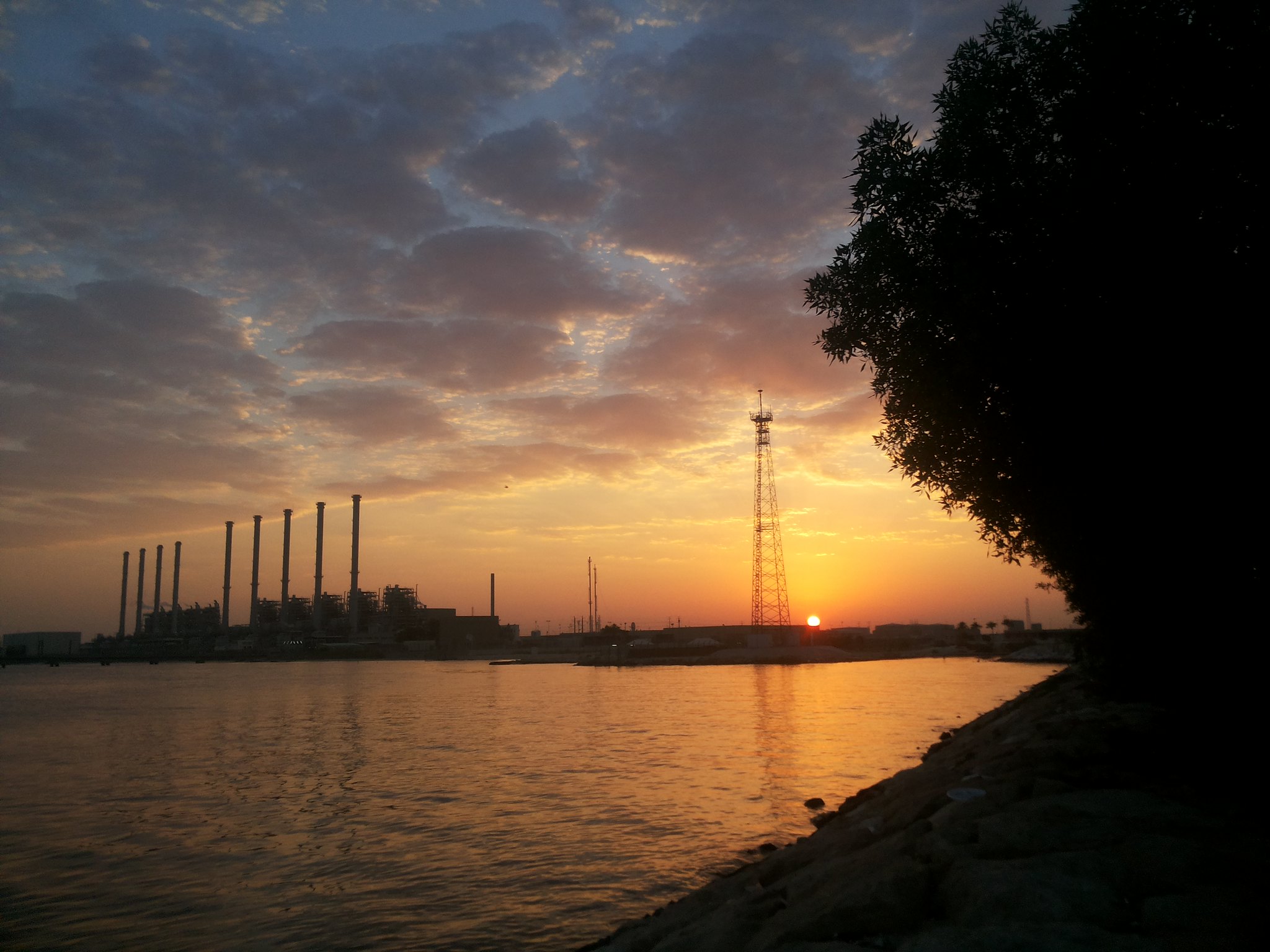Following the record breaking heatwave in India and Pakistan over March and April – which according to a new rapid attribution study made by climate scientists was made 30 times more likely due to climate change – much of the northern hemisphere is now in the throes of anomalously high June temperatures.
According to the World Meteorological Organization, the heatwaves registered across Europe are attributable to an unusually early and intense heatwave arriving from North Africa, which carried temperatures usually associated with July or August to the continent. In fact, parts of Spain and France have witnessed temperatures of up to 10 degrees Celsius higher than the average for this time of year, shattering numerous monthly records.
Yet the blistering heat hasn’t been limited to the old continent. In the United States of America, over one-third of the population was under some form of heat advisory as of the 15th of July, which according to the Scientific American is just a taste of the “new normal” as climate change increases the likelihood of similar heat domes occurring again.
In China, electricity consumption in the provinces of Shandong and Henan reached record levels this week as residents turned their air conditioning units on to tackle the heat. Not to mention Japan, which saw June temperatures above 40 degrees Celsius for the first time ever, as well as a joint record highest June temperature for Tokyo leading Government officials in the capital to issue their first-ever “energy shortage warning” under a new system designed to warn residents a day before any potential energy cuts.
Historic and dangerous heatwave gripping Northeast Asia breaks national June record in Japan 🇯🇵
The first 40°C ever to be recorded in the country in the month of June. pic.twitter.com/E4KnKkSLYj
— Scott Duncan (@ScottDuncanWX) June 25, 2022
The Middle East has also seen anomalous temperatures with the Iranian port of Bandar-e-Dayyer registering 50.4 degrees Celsius, 47.7 degrees Celsius at Zabol which is 490 meters above sea level on the Afghan border, 45 degrees Celsius in Turkmenistan, and 44.2 degrees in Kazakhstan.
The global reports of heatwaves has led to questions about how interconnected they are and if these weather extremes are due to climate change. The New York Times, discusses this question in an opinion piece by Pulitzer Prize winner and climate reporter Raymond Zhong, who claims that understanding the link between simultaneous weather extremes in numerous locations requires further study before it can be attributed to global warming.
The article also quotes Andrew Dessler, a climate scientist at Texas A&M University, as saying that these links are becoming increasingly harder to make as leading scientists no longer know what to call a heatwave and what to treat as simply a new normal for hot weather.
Heatwaves and climate change
Coverage of extreme weather events often links record temperatures to climate change, pointing out that heatwaves are starting earlier and becoming more frequent and more severe due to the record levels of greenhouse gases in the atmosphere.
Climate scientists looking at the link between extreme weather and climate change have produced a series of attribution studies into recent extreme heat events (India and Pakistan 2022, Western North America June 2021, Siberia 2020, and Western Europe 2019) all of which look at the role of human-induced climate change.
However, the issue of extreme weather attribution has not been uncontroversial. According to Science magazine: “Critics complain that extreme event attribution, as the effort is known, overemphasizes public communications and underestimates uncertainty. But new approaches promise to increase the field’s rigor and more precisely capture the relationship between climate change and extreme weather—even for events so extreme that there is no historical record for comparison.”
By highlighting how the slow process of climate change can affect dangerous weather, these techniques have “revolutionized our ability to communicate the findings of climate science to the public,” says Wim Thiery, a climate scientist at the Free University of Brussels when talking to Science magazine, who also expressed a hope that in the future, “You can imagine a weather forecaster saying this heatwave is coming and it’s 2 degrees Celsius warmer because of climate change.”
Zhong writes that: “It’s too soon to say whether climate change is directly to blame for causing severe heat waves in these four powerhouse economies — which also happen to be the top emitters of heat-trapping gases — at roughly the same time, just days into summer.”
Although global warming is undeniably making extreme heat more common, scientists need to conduct more research if they are to be able to determine whether specific weather events were made more likely or more intense because of human-induced warming.
Europe at a crossroads
The connection between climate change and the ongoing heatwaves has been a common thread in news stories across the globe. For French media the heatwave in Western Europe, which started over a week ago, is a clear sign of climate change. The French town of Biarritz, a coveted seaside resort, experienced a record breaking temperature of 41 degrees Celsius, as reported by state forecaster Meteo France.
“This is the earliest heatwave ever recorded in France” since 1947, explains Meteo France climatologist Matthieu Sorel, who told public broadcaster France-Info that this early and prolonged heatwave is a clear “marker of climate change”.
Similar reports show up in Italian media where northern regions are currently concerned by the impacts of water shortages and drought caused by the high temperatures, reduced rainfall and a reduction in snow melt due to the last winter having been particularly poor in terms of snowfall in the southern Alps.
Italy’s national news broadcaster RAI, reports that the situation has brought the regions of Lombardy, Piedmont, Veneto and Emilia-Romagna to demand a state of emergency. This may lead to some northern towns getting water supplies delivered by trucks, whereas others will have to ration supplies of drinking water to restore reservoir levels.
However, Erasmo D’Angelis, Secretary General of the Central Apennine District Basin Authority, and former Undersecretary of State for Infrastructure and Transportation, explains that the drought in Italy is also a matter of weak infrastructure: “Italy is the country with the most water in Europe – more than Britain or France – with 302 billion cubic meters of rain per year (over the past 50 years) […] In contrast, we have a lack of infrastructure, some of which dates back to the postwar period. We currently have 600 thousand kilometers of water mains that lose 42% compared to the European average loss of 8%.”
A situation that is also emphasized by WWF Italy whose opinion piece addresses the numerous errors that have been made in the management of water resources in Italy, arguing that there is a need to listen to the scientific community and adapt to the coming changes.
Yet stories of heatwaves and drought are not uncommon in countries such as Italy, France, and Spain. Even more alarming, the recent issues being faced by the United Kingdom serve to highlight how anomalous the current climatic situation is for the entire region.
The Financial Times indicates that the UK had its hottest day of the year on Friday, with 30 degrees Celsius observed in southeast England. An issue that was picked up by The Sunday Times which reported on the request by scientists for heatwaves to be named, as is done with significant storms, so as to increase popular awareness.
However, some news reports also focused on the UK heatwave of 1976 leading to speculation that the current UK temperatures are not anomalous or attributable to climate change. An issue which was discredited very effectively by ecologist James Mackenzie on his Twitter feed, whose data visualizations for the years 1976 and 2018 reveal the localized nature of the 1976 heatwave versus the current one that has spread across much of Western Europe.
anyone saying recent extreme temperatures remind them of the UK’s localised 1976 heatwave either knows nothing or is trying to mislead you (L: 1976, R: 2018) pic.twitter.com/Dn2iI8KuKh
— James Mackenzie (@mrjamesmack) June 18, 2022
Communicating heatwaves
The issue with how to communicate the reality behind the widespread heatwaves currently affecting large areas of the Northern Hemisphere has seen the rise of interesting new ways of communicating climate issues as well as criticism of other forms.
One example is the idea of giving names to heatwaves. The idea is that if short distinctive names are used to label heatwave events then they will be much easier to identify and conjure stronger images in the general public.
In further efforts to improve communication of extreme weather events some have raised an issue with the images used by media outlets when reporting on heatwaves, as these are often sunny beaches and relaxing holiday weather which fail to convey the true impact of scorching temperatures.
According to Dr Saffron O’Neill, who works on researching climate change communication and engagement as an associate professor in geography at the University of Exeter, “Many of the images used in heatwave reporting seem instead to suggest a visual discourse of ‘fun in the sun’ – eating ice-creams, splashing about in city fountains or relaxing at the beach.”
O’Neill goes on to expand on this when writing for Carbon Brief where she shows multiple examples of UK newspapers reporting on heatwaves whilst using jovial images. “Finding – and using – more effective ways to visually communicate about an increasingly hot future is a pressing issue.”
Communications specialists at Climate Outreach have created the Climate Visuals project, a growing library of evidence-based images for effective climate engagement.
Another way of portraying heatwaves more effectively is the use of compelling data visualizations. Using social media and Twitter in particular, climate scientists have been providing an array of compelling data visualizations to depict the unfolding global heatwaves. Twitter feeds such as Extreme Temperatures Around the World, Zack Labe and Tomer Burg have been seeing very high user interactions as their data visualizations provide clear access to the realities of heatwaves.






